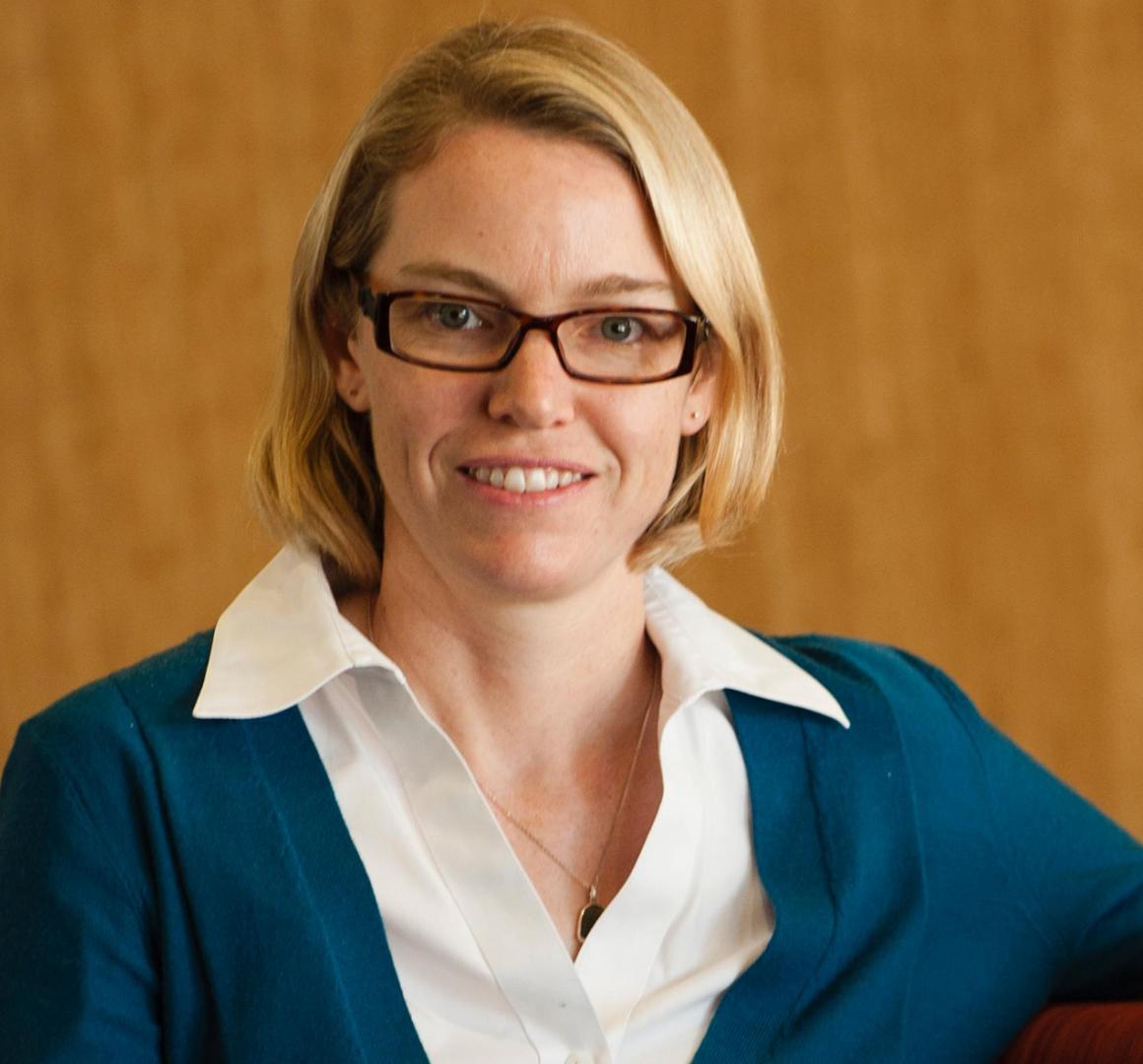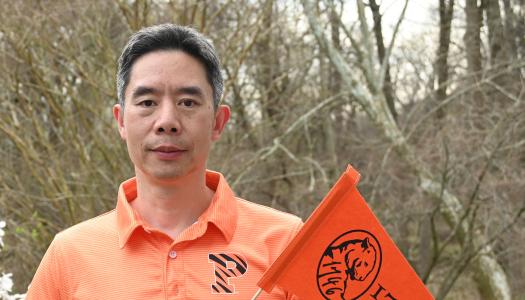5 Questions with Alison Marsden ’98

Alison Marsden ’98, a professor in the departments of pediatrics, bioengineering and mechanical engineering at Stanford University, has spent her career focused on solving complex health problems for sick children suffering with complicated cardiac issues.
Initially interested in defense work, Marsden, who was a mechanical engineering major at Princeton, pivoted to biomedical research when she was completing her Ph.D. and looking for a post-doc position. “I decided I wanted to work on applications with a human focus, and I was personally more motivated by applications in human health,” said Marsden, who runs the University Cardiovascular Biomechanics Computation Lab, a.k.a. the Marsden Lab at Stanford and previously at the University of California San Diego.
In her lab, Marsden and her team develop patient-specific modeling of blood flow for cardiovascular applications to determine the best solutions for patients with complex heart defects. Specifically, they build custom 3D models of a patient’s vascular anatomy and then run simulations of blood flow in those models to use for surgical planning and understanding disease progression.
“These models give us a risk-free way of trying them out without going into animals or humans immediately,” she said. “I really enjoy the interdisciplinary aspect of my work because I get to talk to a lot of medical doctors, and we learn a lot from each other. Acting as a communicator between medical people and the engineering folks is a fun position to be in.”
Over Zoom, Marsden answered five questions about her work and her outlook for the future of her field.
What keeps you up at night?
Single-ventricle patients [missing one of the two heart ventricles] are very, very challenging to treat. They have high morbidity and mortality rates, and we currently don’t have any functional cures. Physicians basically have to do these surgeries to palliate, and then hope they can maintain function of that one ventricle as long as possible. Families of those patients really go through a lot, with their child going through very complex procedures and potentially weeks, and even months, in the hospital.
Normally we have two pumps — one ventricle pumps to your body and one pumps to the lungs — but some babies with single ventricle congenital heart defects are born with only one functional pumping chamber. And so they undergo three major surgeries starting at birth to try to palliate this situation. And that often culminates in something called a Fontan procedure where basically you just have one pump that sends the blood all the way around the body, so the blood only visits the heart once. We have been doing computer modeling for all three stages of the surgical repair for these patients.
Most recently, we’ve been looking at this in its early stages and asking, “Can we develop an alternative surgery for stage one that might improve oxygen delivery?” And so we’ve actually proposed a variation on that procedure using computer models. And we’re now looking to plan animal studies to try to test this concept. That’s been really interesting because we proposed it based on kind of an engineering principle that led us down a path of gathering additional clinical data and refining our models. That kind of interplay between the clinicians and engineers has been really important for moving that forward.
Who inspired you in your career?
My father, Jerrold E. Marsden *68, a mathematics professor at Caltech and Berkeley, sent me down the path of being interested in STEM by playing fun math games with me when I was a child. Naomi Leonard, [the Edwin S. Wilsey Professor of Mechanical and Aerospace Engineering], who was my undergrad advisor at Princeton, was also an inspiration because I saw her as a role model for being a woman in engineering and also having a family. She demonstrated that it could be done.
My Ph.D. advisor Parviz Moin [Franklin P. and Caroline M. Johnson Professor of Mechanical Engineering at Stanford] instilled in me the need for rigorous science and maintaining high standards in the lab. And finally my postdoc advisor, Charlie Taylor [currently consulting professor of bioengineering at Stanford]. I think I got from him that it’s okay to have big ideas. He’s more of a high-risk, high-reward, kind of a guy, so I think I got some boldness from him in exploring new ideas. And finally, I’m inspired by the clinicians whom I work with on a daily basis, especially the surgeons who day after day, perform these surgeries on tiny infants. It’s just very impressive what they’re able to do.
What excites you most about your work?
I think it’s the interdisciplinary aspect and the potential for having a fairly immediate impact in terms of translation. People talk about bench to bedside. We previously proposed a surgery that was actually done on patients in a pilot study at two centers. And so it’s very exciting to work on things that are close enough to the bedside that they actually have hope of being implemented in my lifetime. I also really enjoy the mentoring aspect of my job as a professor, guiding graduate students and postdocs through their career decisions and helping them get on a path for whatever it is they want to do next.
How do you hope that your work will help create a better future?
We’re hoping to develop improved surgical methods for cardiovascular disease patients, and we have projects both in pediatrics and adult cardiovascular disease. Ultimately, we’re hoping to improve outcomes for those patients and to bring some fundamental engineering principles and methods to bear on medical problems.
I think we’re used to the idea of doing engineering design for something like an airplane or an automobile, but we’re less used to that concept being applied to surgery. One of the powerful things that we have developed in engineering is these predictive computational models where you can run a simulation and pretty reliably predict the lift and drag generated by an airplane wing, for example. These same principles need to be applied to medicine so that we can take a more systematic, predictive approach to either personalizing the surgical methods that are being used, or exploring new methods in a more systematic way so we can more efficiently improve.
What are you thinking forward and what does it mean to you?
“Team science” and how things are being advanced today. In my role I often act as kind of a hub or a translator who brings different groups of people together. I might have medical doctors and biologists who are collaborators, and I might also have computational science or applied math type people working together. It’s important to bring everybody’s expertise together to advance medicine. The work we do is highly interdisciplinary.


